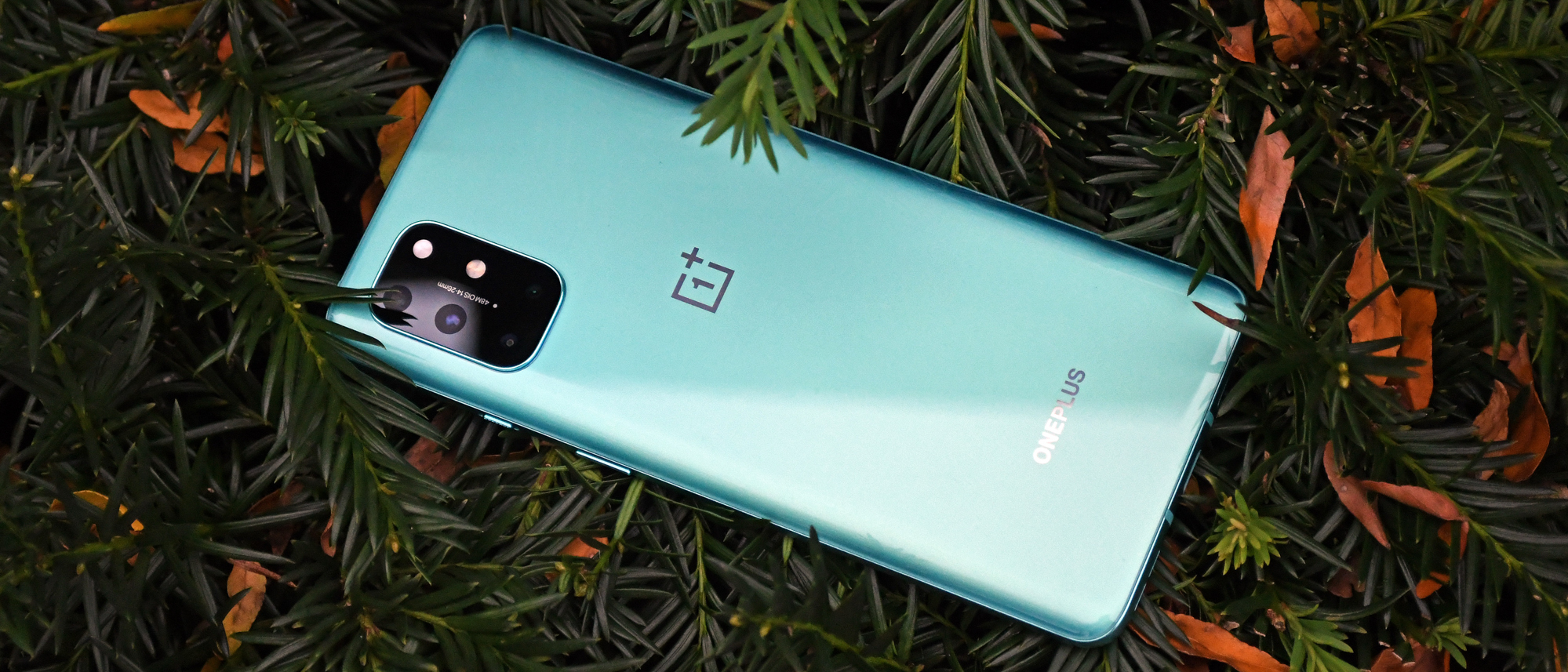Tom's Guide Verdict
The OnePlus 8T could have been a new flagship phone-killer, with its strong specs, excellent display, and super fast charging. But the cameras don’t quite measure up to other leading phones.
Pros
- +
Bright and smooth 120Hz display
- +
Super fast charging
- +
Slick and unobtrusive software
- +
Solid performance
- +
Premium design
Cons
- -
Disappointing camera performance
- -
No wireless charging
Why you can trust Tom's Guide
Price: $749
OS: Android 11 with OxygenOS 11
Display: 6.55-inch AMOLED (2400 x 1080), 120Hz
CPU: Snapdragon 865
RAM: 12GB
Storage: 256GB
Rear cameras: 48MP main (f/1.7), 16MP ultra wide angle (f/2.2), 5MP macro camera, 2MP monochrome camera
Front camera: 16MP (f/2.4)
Battery size: 4,500 mAh
Charging speed: 65 watts (included charger)
Size: 6.32 x 2.91 x 0.33 inches
Weight: 6.6 ounces
Update: While the OnePlus 8T is a good phone and can be found at a discount, we recommend the newer OnePlus 9 series because of its improved Hasselbad camera system. See our full OnePlus 9 review and OnePlus 9 Pro review.
The OnePlus 8T, despite having an amazing foundation, never quite made it to the best Android phones. If you want a OnePlus phone that gets our seal or approval, then check out our review of the OnePlus 9.
But the OnePlus 8T is far from a bad phone, in fact it's rather good, as a successor to the OnePlus 8. It gets a super-smooth 120Hz display and four rear cameras, as well as a smart dual battery fast-charging system.
OnePlus 8T review: Price and release date
There’s only one version of the OnePlus 8T available in the U.S. and it's the model with 12GB of RAM and 256GB of storage. It's been available to buy since October 23 2020.
The beefy U.S. spec, which is variable in Aquamarine Green and Luna Silver colors, will set you back $749. That makes the 8T $50 more expensive than the OnePlus 8, which started at $699 but had less RAM and storage.
In the U.K. the Lunar Silver model is only available with 8GB of RAM and 128GB of storage, but costs £549. The Aquamarine Green only comes with the higher spec and costs £649. Both went on sale on October 20.
At this price, though, the higher-spec OnePlus 8T still pushes the upper end of the mid-range phone arena. That’s both a good and bad place to be in. As many phones have hit or surpassed the $1,000 marker, there aren’t a great deal that offer a suite of flagship specs or standout features for a sub-$800 price. However, the competition that’s there is stiff indeed.
The $699 Samsung Galaxy S20 FE offers a serious mix of flagship specs, with only a few compromises in the form of a plastic back and less RAM than the 8T. The $699 Google Pixel 5 also undercuts the 8T, but compromises on both refresh rate and processing power, though it offers stellar photography performance instead.
Over in the U.K., the entry-level OnePlus 8T offers superior specs to both the £599 Pixel 5 and Galaxy S20 FE. so it's arguably a more competitive handset on Britain’s side of the Atlantic. But this was once a price point where OnePlus mostly stood alone; now it’s got to face down two phones that have very appealing features.
So the OnePlus 8T has its work cut out if it wants to beat similarly priced phones. And it’s worth noting that the OnePlus Nord offers a lot of phone for £379, roughly $490, even if it’s not as powerful on paper, and isn't available in places like the U.S.
OnePlus 8T review: Design
Speaking of the OnePlus Nord, the OnePlus 8T looks a lot like OnePlus’ budget device. Both phones sport a neat rounded rectangular design with displays that are flat, not curved like the edges on the OnePlus 8’s display. This makes the 8T a lot easier to grip, if not as aesthetically pleasing.
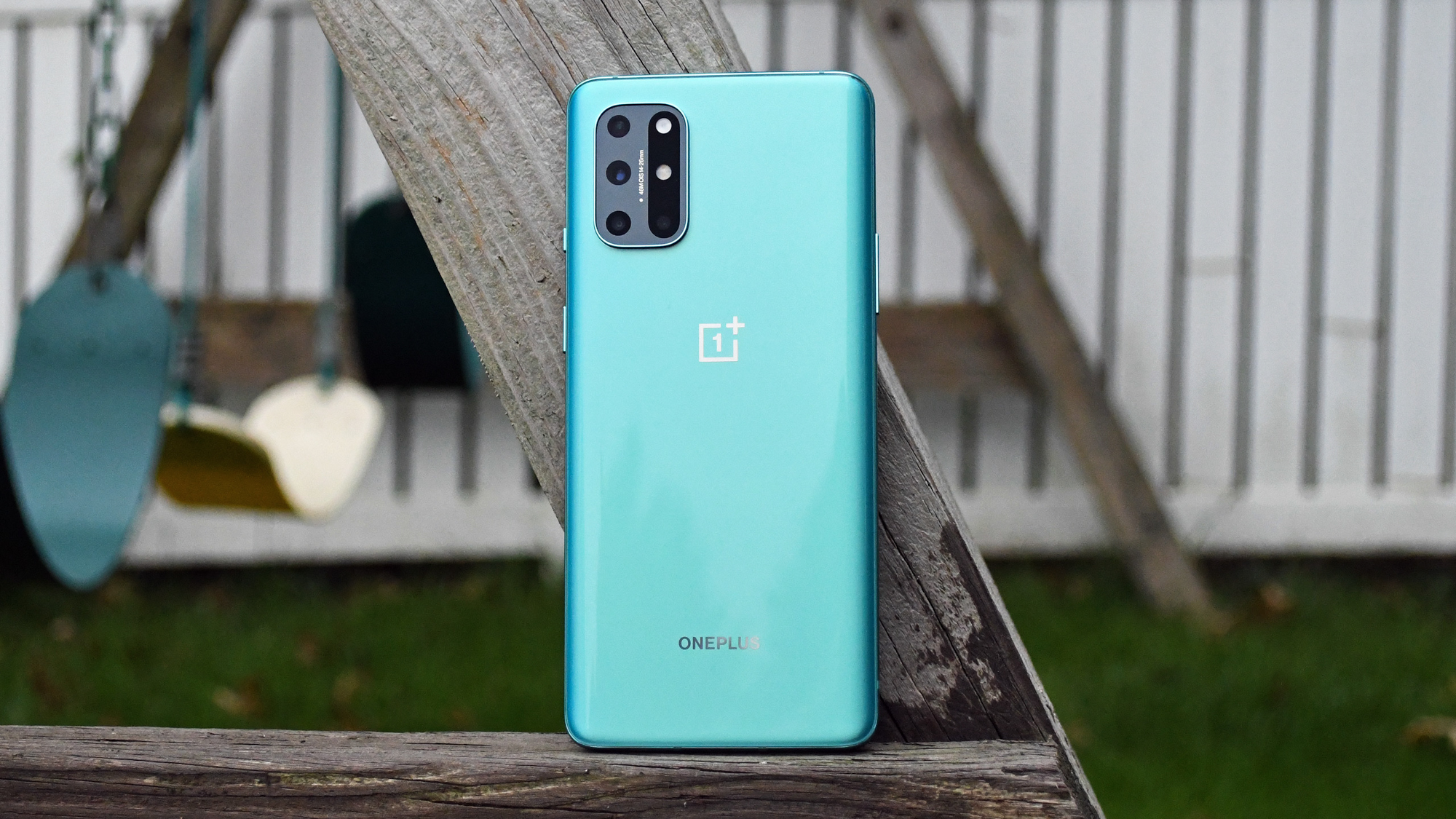
The OnePlus 8T is a little larger than the Nord and the OnePlus 8, measuring 6.32 x 2.91 x 0.33 inches and weighing 6.6 ounces. With its glass back and premium finish the 8T feels more like a flagship phone than the Pixel 5 with its aluminium back.
This has long been a strong part of OnePlus phones and while you might not be getting a true flagship phone, the 8T certainly has that high-level of build quality and finish that feel more in line with $1,000 handsets. And whatever treatment OnePlus has given the 8T, its back is pretty resistant to fingerprints, which makes a pleasant contrast to some phones.
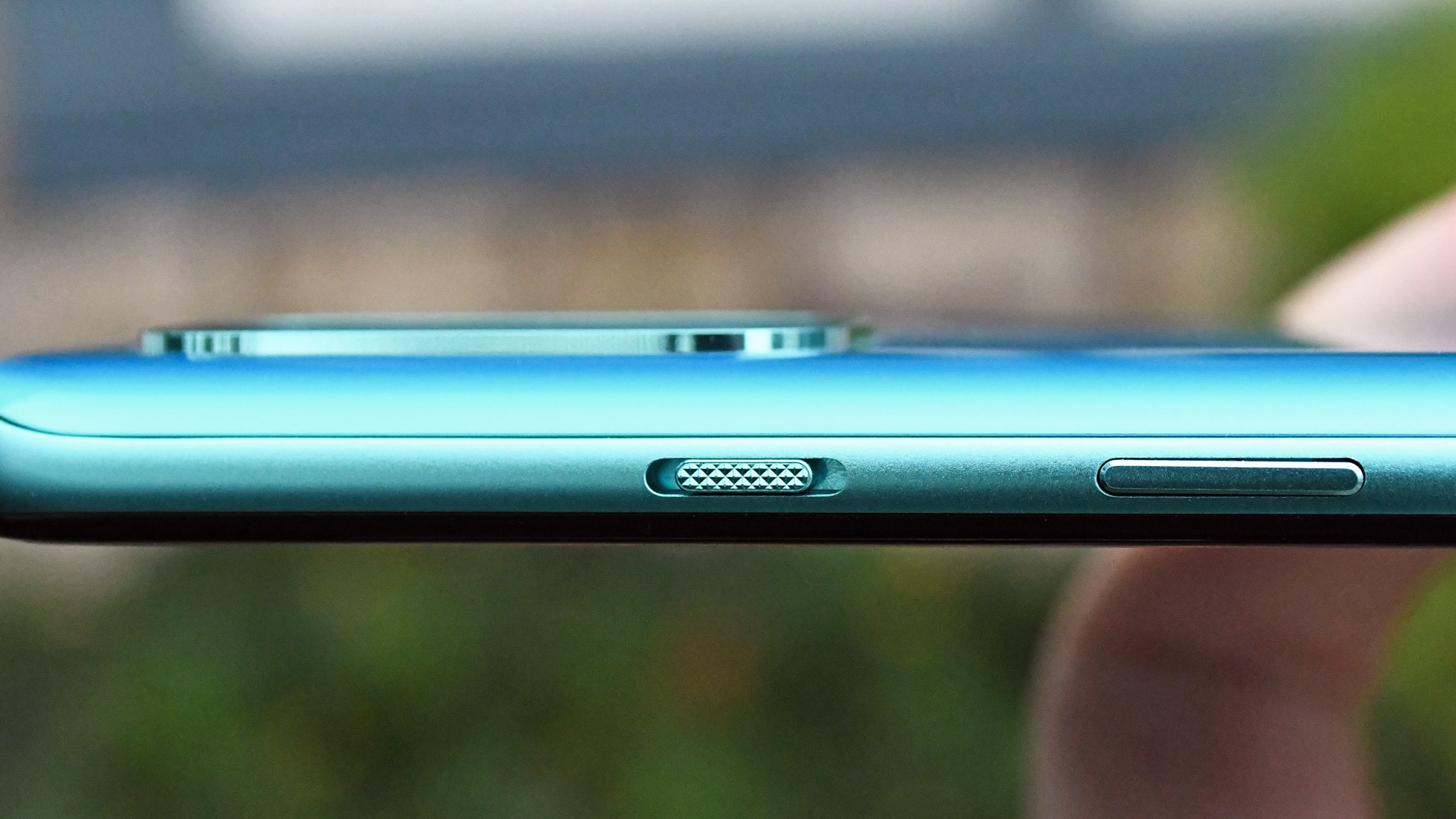
There’s no IP68 water and dust resistance rating here, something that’s expected in a lot of flagship phones but a feature that OnePlus has shunned for years. In practical terms, that doesn't matter a great deal as OnePlus has used various seals to keep water out of its handsets, meaning that they’ll survive a quick drop into a sink or a drenching from a sudden downpour. That doesn't mean I’d advocate dropping a OnePlus 8T into a pint on a regular basis.
The biggest change the OnePlus 8T brings to the table is its rather prominent rear camera module that houses four cameras and a flash in a rounded rectangle unit positioned in the top right-hand side. That’s a significant change from the OnePlus 8’s pill-shaped trio of cameras that sat in the top middle section of the handset.
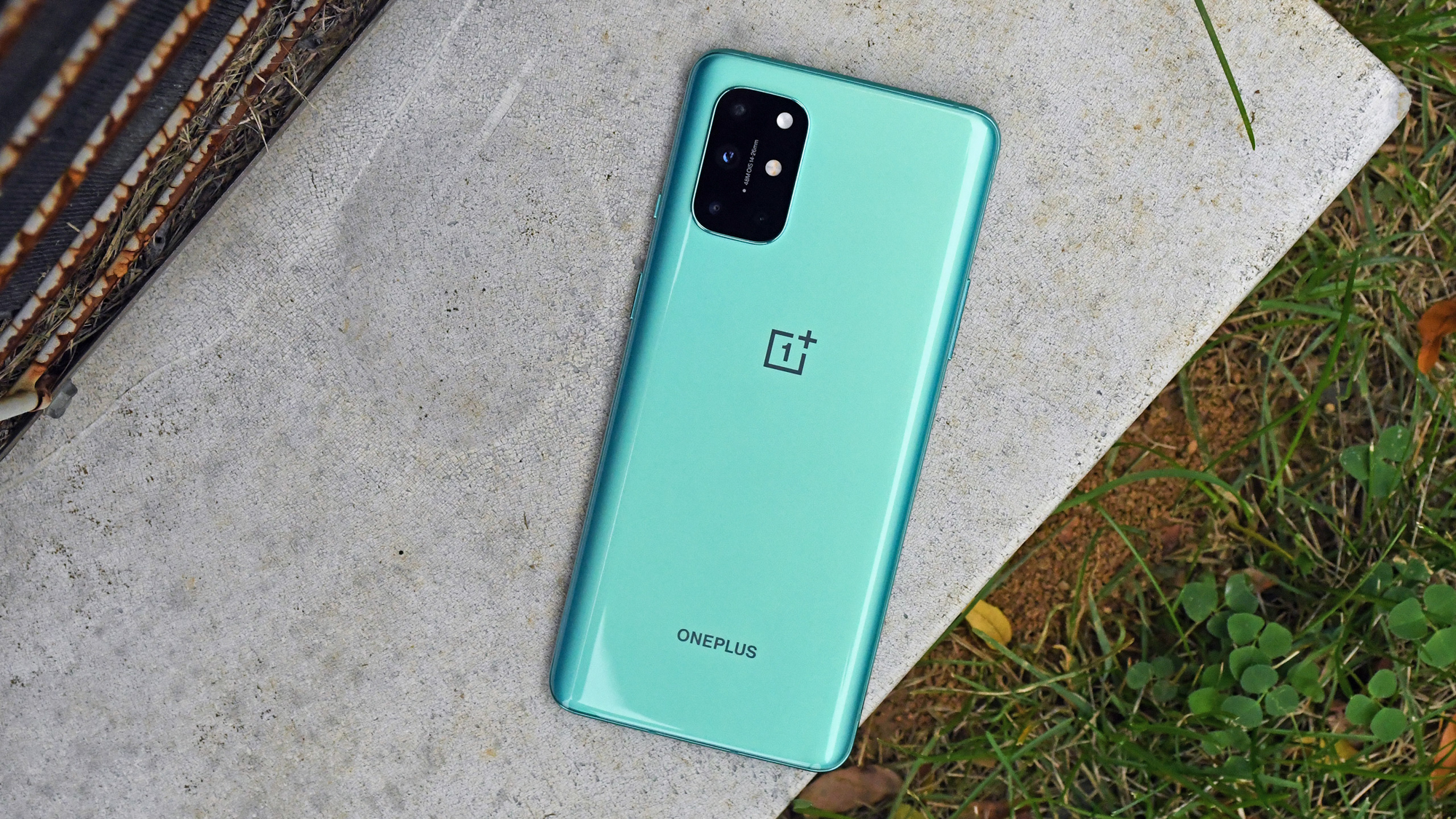
I prefer the older design for its neatness. But chunky rear camera modules are en vogue in 2020, and the OnePlus 8T’s module is hardly the most offensive. And it’s positioned in a spot that means you’re less likely to hit it with your fingers when snapping a photo in haste.
With only silver and green for color options, the OnePlus 8 doesn't exactly have a broad range of finishes to choose from. While I’d have liked to have seen the striking blue hues of the OnePlus 7T return, I think both the Aquamarine Green and Lunar Silver colors are rather attractive.
OnePlus 8T review: Display
Recent OnePlus phones have offered impressive displays, and the OnePlus 8T keeps up with that tradition. It’s a 6.55-inch display with 2400 x 1080 resolution. More importantly, it features a super-smooth 120Hz refresh rate, which makes the OnePlus 8T a joy to use.
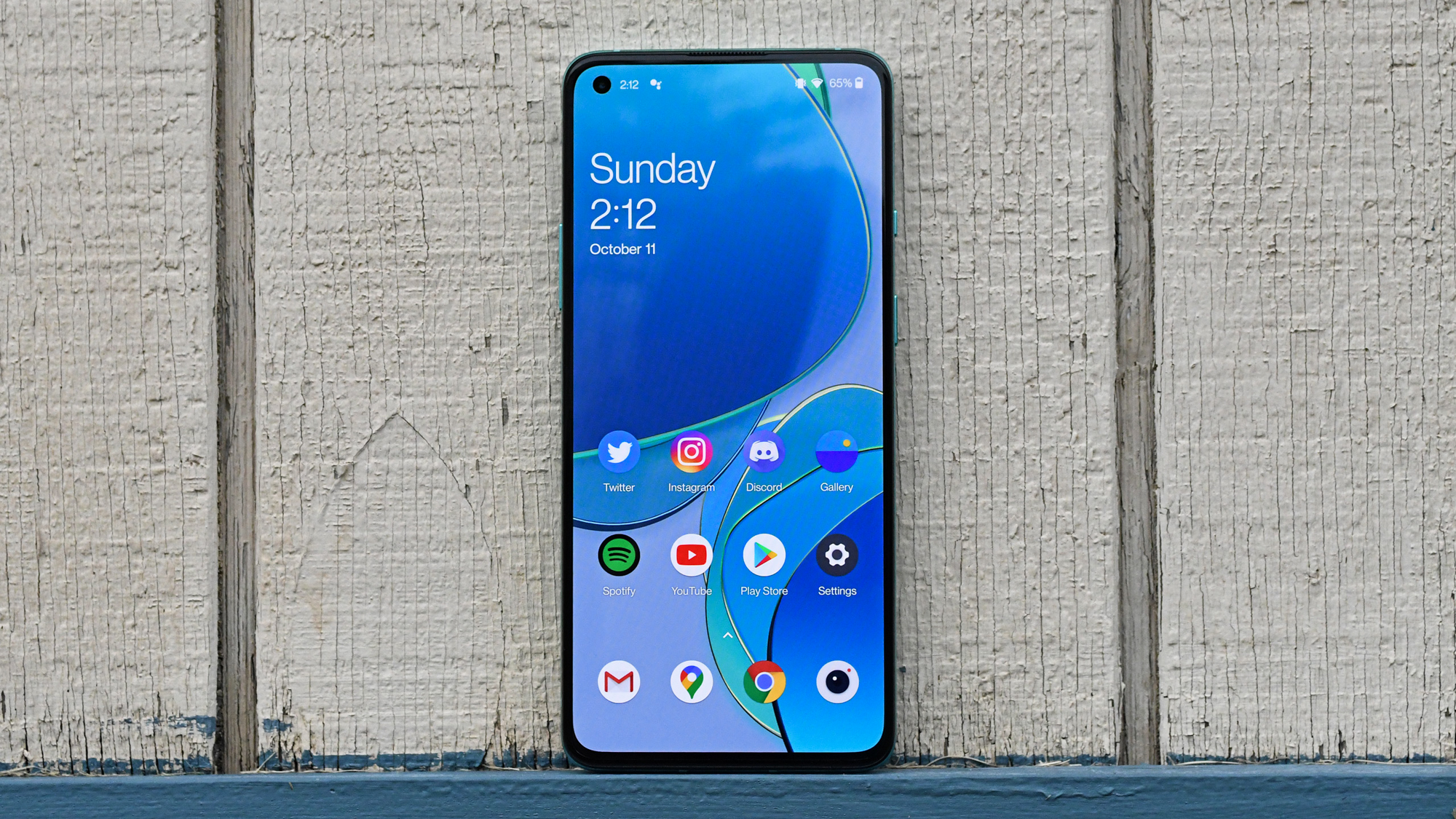
High refresh-rate displays are becoming more prolific, even if phones like the Pixel 5 stick with 90Hz rather than 120Hz. Use such phones for any length of time and you could find it very hard to go back to a conventional 60Hz screen. I switched the OnePlus 8T out of its 120Hz mode and immediately regretted it, as scrolling through menus and webpages felt rather jarring after the smoothness of 120Hz.
I’m less convinced by a jump from 90Hz to 120Hz. Comparing the OnePlus 8T to the OnePlus 7T Pro’s 90hz display, the difference in smoothness wasn’t vast, so don’t expect it to feel like a huge upgrade.
At 1080p the OnePlus 8T’s display isn’t as sharp as other phones with 6.5-inch displays and above. But you’ll only really notice the difference between a 1080p and 1440p panel if you really zoom into photos. And with a pixel per inch density of 402, the difference in sharpness between the 8T’s panel and those of flagship phones is negligible.
With an OLED panel that supports HDR, the OnePlus 8T handles colors and contrast rather well. In our tests, its default “vivid” mode covered 169.9% of the sRGB color gamut and 120.2% of the DCI-P3 color space. That beats the results we got for the OnePlus 8 Pro, but lagged a little behind the Galaxy S20 FE in DCI-P3 coverage, with Samsung’s phone hitting 133.3%.
As for color accuracy, the OnePlus 8T managed a Delta-E score of 0.29 in our lab tests (the lower the score the better), which beats the S20 FE’s score of 0.3. Drop the OnePlus 8T into its “natural” screen calibration and colors become more accurate delivering a Delta-E score of 0.22, at the expense of lesser color gamut coverage.
Everything on Netflix, from The Witcher’s varied color pallet to the vivid hues of comedy spy animation Archer, looks excellent on the OnePlus 8T’s display. So do YouTube videos with the frenetic action of the James Bond No Time To Die trailer showing how well the display can pick out detail in both dimly lit scenes and those saturated with color. It’s up there with some of the best smartphone displays, perhaps only being edged out by the stellar displays on phones like the Oppo Find X2 Pro.
It helps that display gets rather bright, hitting a peak of 678 nits with the adaptive brightness on. That's up there with the S20 FE and other 2020 Samsung phones, but it’s beaten by the iPhone 11 Pro's 752 nits. Still, the OnePlus 8T’s display is an upgrade over the OnePlus 8’s panel, just not a huge one.
OnePlus 8T review: Cameras
For its rear camera array the OnePlus 8T takes the 48MP main and 16MP ultra wide-angle cameras of the OnePlus 8 and adds in a 5MP macro camera and 2MP monochrome camera. There’s no telephoto lens in the mix, like the one you find on the OnePlus 8 Pro or Galaxy S20 FE. The omission is also a little odd given last year’s OnePlus 7T came with a 12MP 3x telephoto camera.
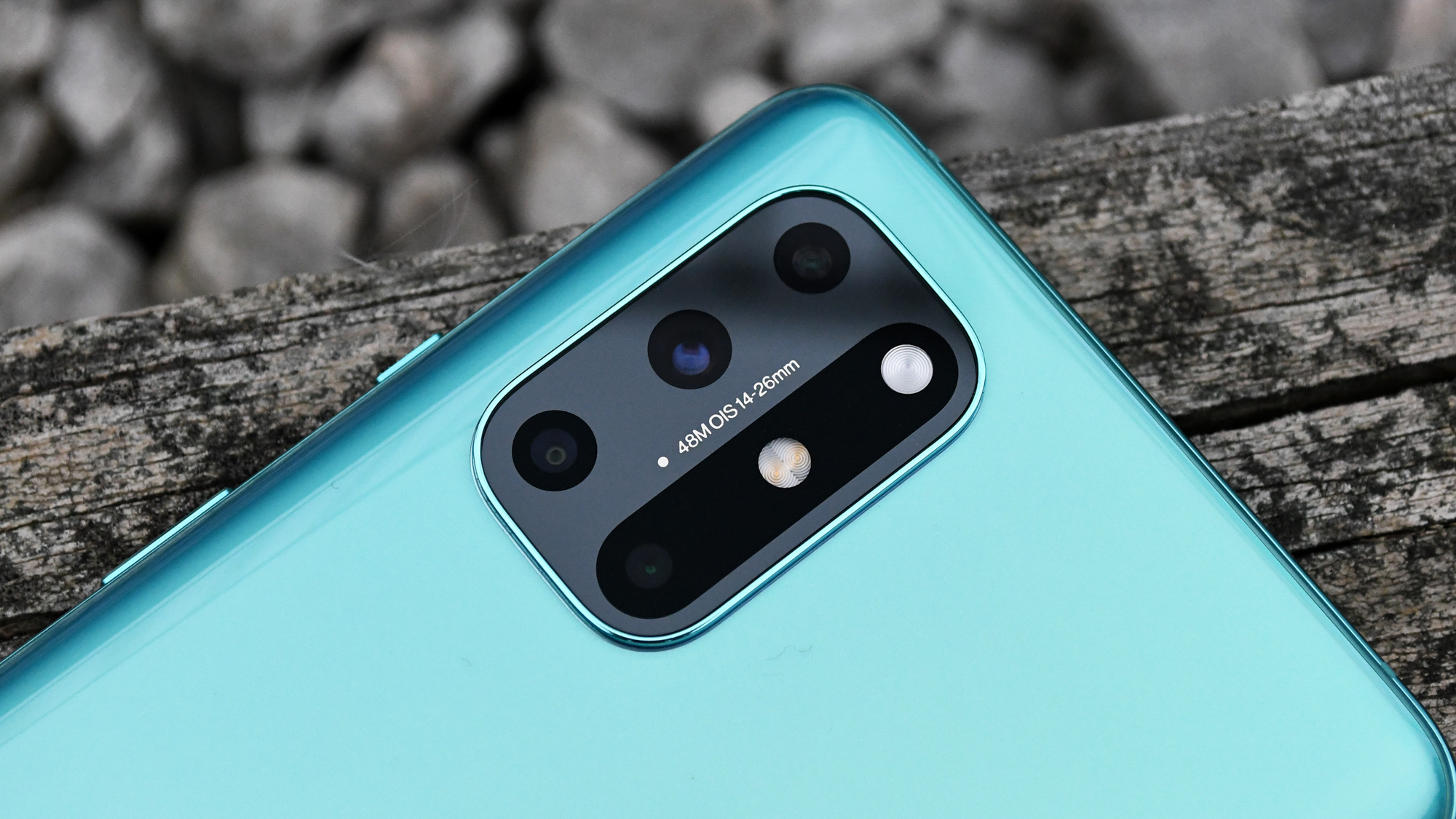
Still, with four cameras on offer and OnePlus having shown it can produce a smartphone with flagship-grade cameras with the OnePlus 8 Pro, my expectations were rather high for the 8T. Sadly, they weren’t met.
Photos taken with the main camera were in the same ballpark as those of other Android flagships. But the performance of the other lenses fell flat.
It's worth noting that since we first reviewed the 8T, OnePlus has put out a suite of updates that have improved the camera performance, But sadly, the shots we pick through below are still representative of the phone's photography skills. Overall, it's decent but can't quite justify it high price in the face of strong rivals.

Compared to the new Pixel 5, the 8T’s 48MP main camera holds its own. It snaps shots that are then resolved down to 12MP photos using a tried-and-tested pixel binning technique. In the below shot of a damp London park and cloud-studded sky, you can see the 8T offers a brighter and more vibrant shot than the Pixel 5. But Google’s new phone captures more true-to-life colors with more dynamic range. Zoom in to the tower blocks or Canary Wharf in the background, and you can see the Pixel 5 offers a little more detail.
Like the recent OnePlus phones with 48MP main cameras, there’s the option to capture pure 48MP photos. Unsurprisingly, the 48MP mode produces shots with more detail when you zoom into them, but the difference isn’t profound. There are differences in color and brightness, but neither shot is particularly true to life.
Given the OnePlus 8T has the same Sony IMX586 sensor in the 48MP camera as the OnePlus 7T Pro, it’s worth seeing if the 8T offers a decent upgrade over the older phone. There's not a great deal of difference on display in standard point-and-shoot shots. The 8T offers brighter and more vibrant compositions, with more dynamic range and a little more detail when zoomed in.
Despite having a dedicated macro camera, the lack of a telephoto lens on the OnePlus 8T means getting very close to a subject to use the super macro mode on the 8T is a bit tricky. Whereas the 3x optical zoom on the 7T Pro makes it a lot easier to get a tighter shot, trying to get a good close up photo with the 8T was an exercise in frustration for me. But zooming into the macro shots, such as the one of the pewter knight below, you can see that the 8T better captures the texture in the knight’s helmet.
The lack of a telephoto camera rears its ugly head again with the 8T’s 10x zoom, which uses a hybrid mix of optical and electronic image stabilisation. Zooming into signs revealed an ugly distorted mess with the 8T. The OnePlus 7T Pro and the Pixel 5 — which also lacks a telephoto lens — produce much clearer images.

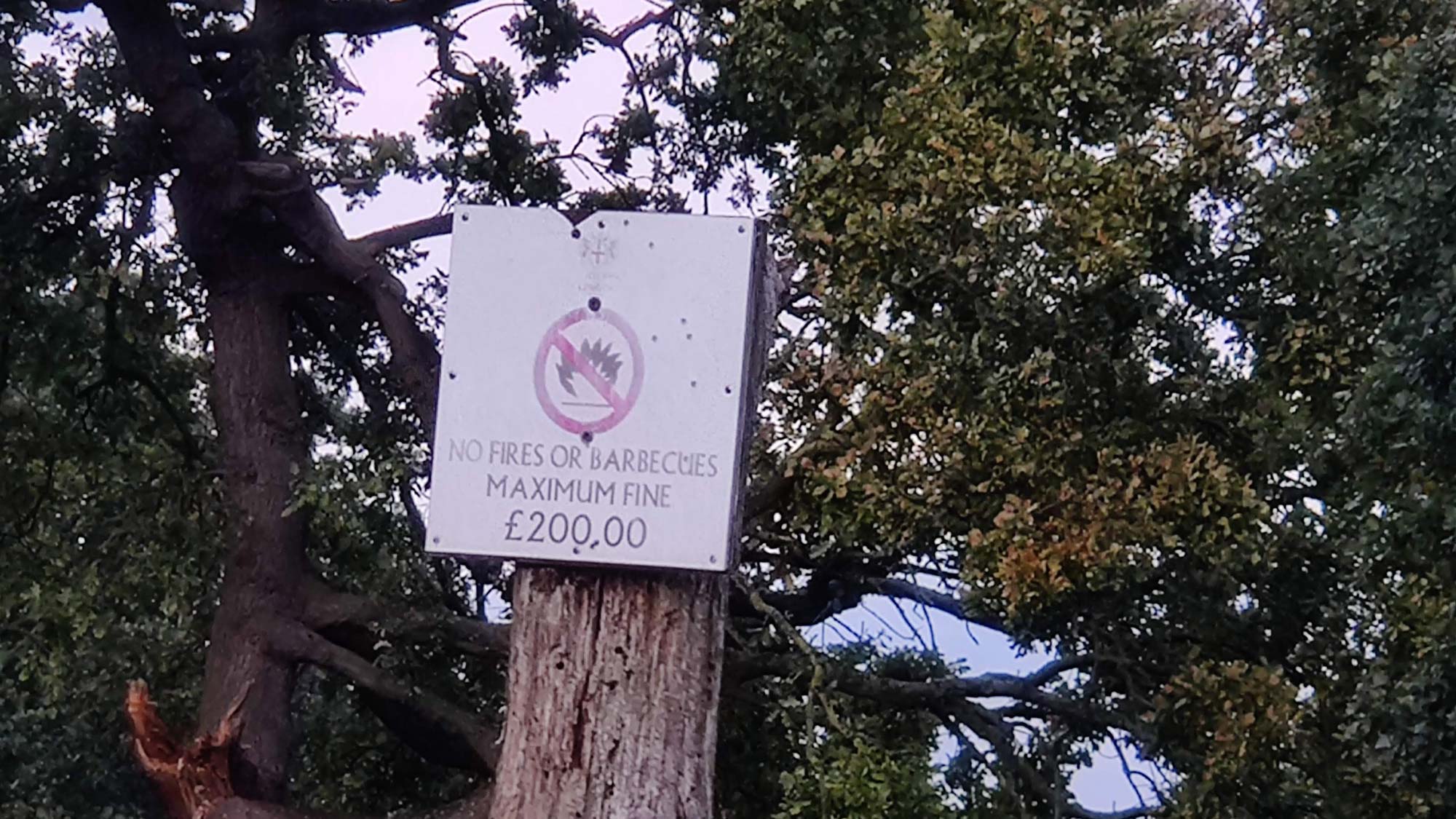
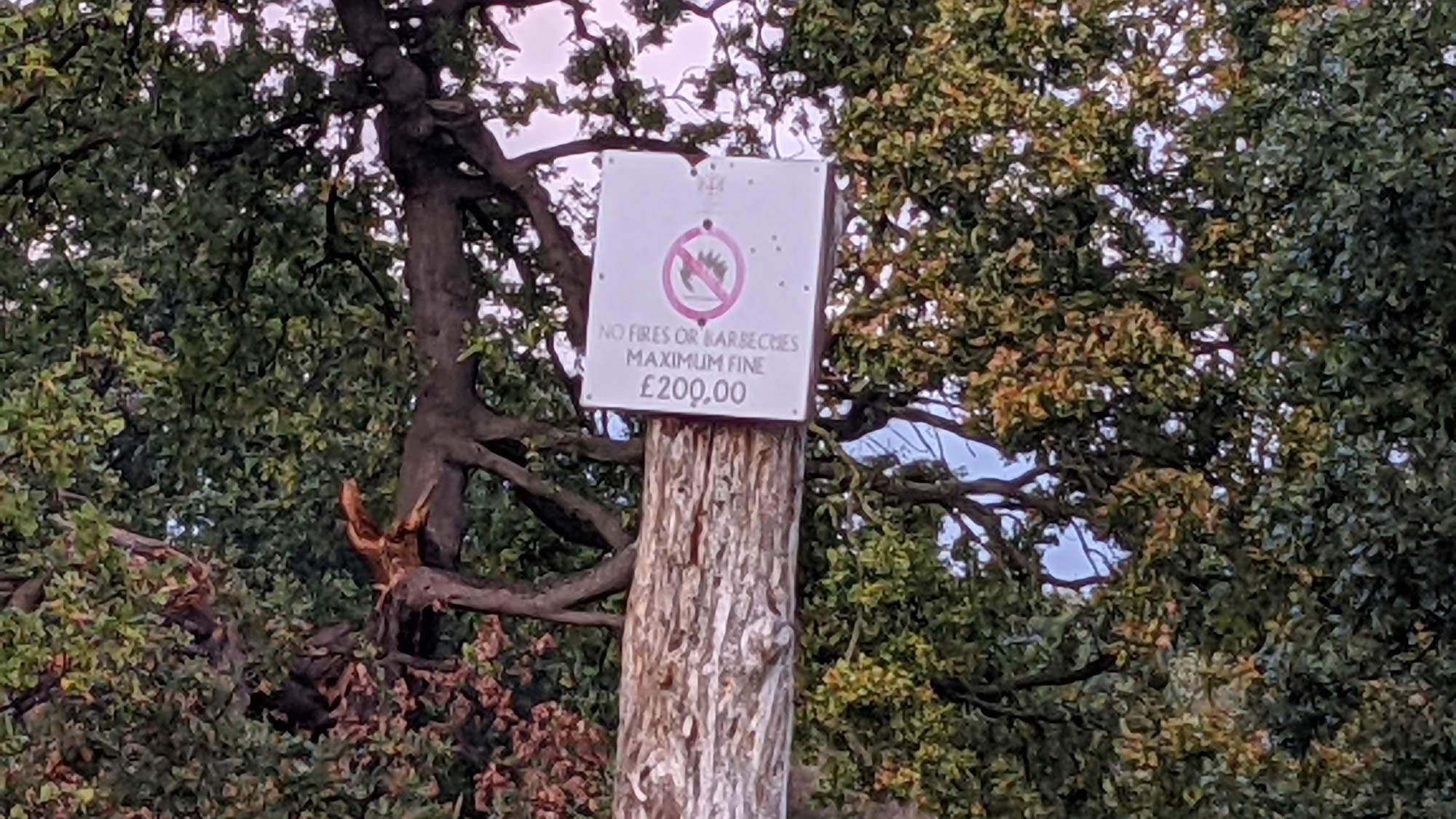
Speaking of distorting, the 16MP ultra wide angle camera offers a 123-degree field of view, but despite capturing extensive landscapes, there’s some poor image processing going on. Take the photo of the geese below: the standard camera shot presents a perfectly fine shot. But switching to the wide angle mode ended up with very muddy images, as if someone had smudged the shot. The trunk of the tree looks strangely smooth and the leaves of trees in the background look worse than a hastily painted watercolor.

By default, the 8T handles night time photography reasonably well, albeit slightly blowing out some light sources. Activate the Nightscape mode and it’ll pick out a lot more detail in the highlights and illuminate previously dark areas.
Compared to the Pixel 5, the 8T produces brighter night time shots, though it adds a bit of yellow hue to photos and over-saturates colors. Take a look at the scene below: The 8T’s shot is brighter but the red gate has been given a candy red color, when it’s actually more muted and closer to the Pixel 5’s rendition. And zoom into the red car on the right and you’ll see the Pixel 5 displays the number plate a lot clearer, whereas the 8T has a lot more noise; the smoothing in dimly lit photos seems to have been abandoned in the Nightscape mode.
One area that the Pixel 5 crushed the OnePlus 8T is in portrait photos. As you can see in the photos of my friend Claire, the Pixel 5 produces a detailed and well-composed portrait shot. Whereas the 8T gets the colors and white balance all wrong, making Claire look rather washed out. And aggressive smoothing has taken out all the texture of her hair. This is one of the most disappointing shots the 8T has produced, especially when the OnePlus 8 Pro delivered strong profile photos.
What’s both interesting and irritating here, is the OnePlus 8T produces decent profile photos of people without the portrait mode enabled. There’s a little more smoothing going on compared to the Pixel 5, and skin tones look less natural. But otherwise photos of people captured using the 8T’s main camera are thoroughly decent, though far from excellent.
Completing the rear cameras is the 2MP monochrome camera. It shoots decent monochrome photos, which is nice to have but I feel like it’s a bit of a gimmick; I’d much rather a telephoto lens instead.
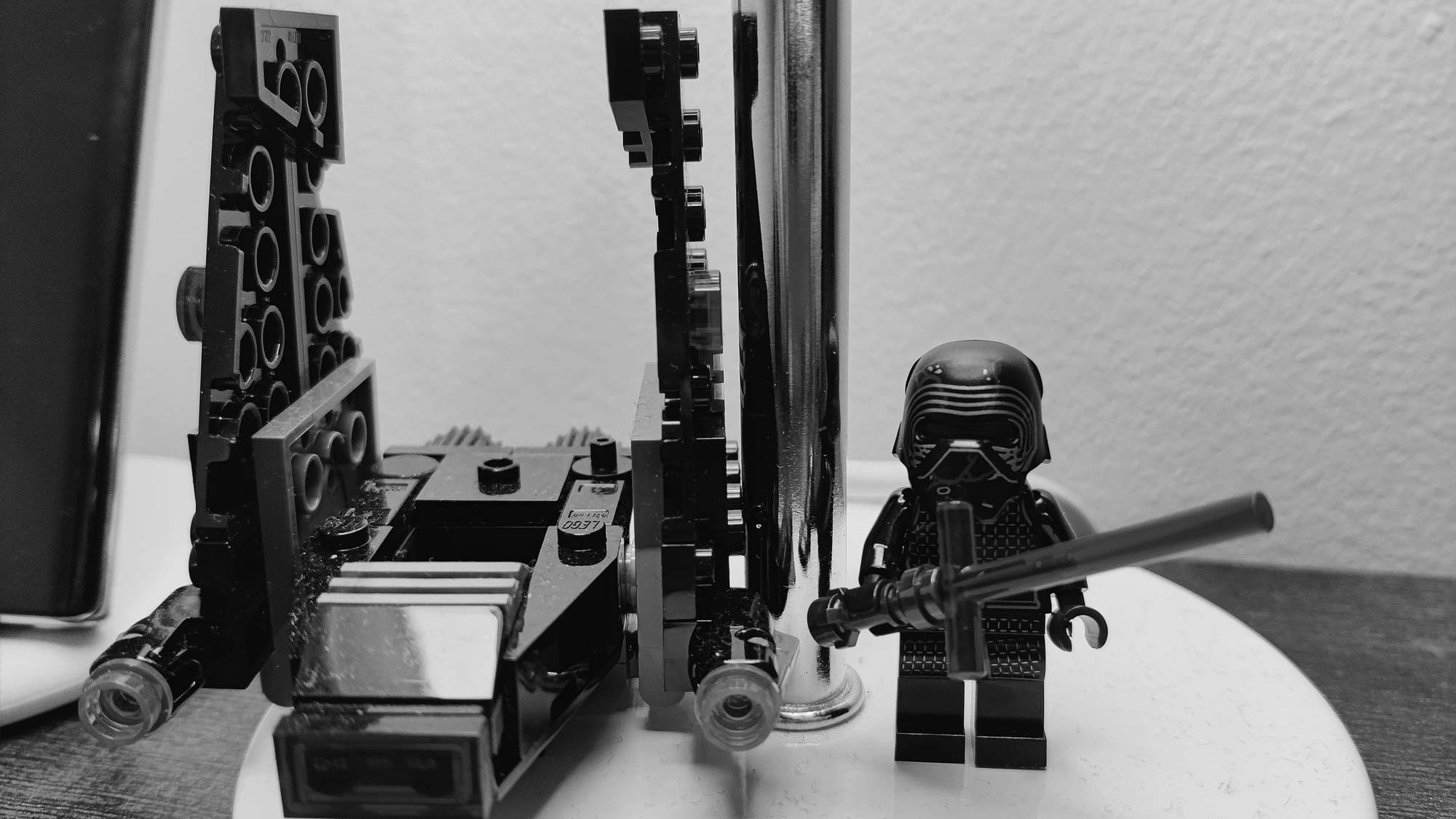
Flip the OnePlus 8T around and you’ve got the same standard 16MP selfie camera of the OnePlus 8 and 8 Pro. And much like those phones, the 8T does a good job of selfies.
From the selfie my colleague Adam Ismail snapped, the 8T produces a sharper image than the Pixel 5. But Google’s phone delivers more natural colors, with the 8T adding a red tinge to Adam's face. And it’s pretty much the same story for the front-facing camera’s portrait mode.
Video on the OnePlus 8T starts at 1080p and 30 frames per second and tops out at 4K 60fps, much like the previous OnePlus 8 phones. And there’s a Super Slow Motion mode that can capture 720p videos at 480fps or 1080p videos at 240fps. There's also Nightscape and portrait bokeh modes for video capture; I’m not convinced by the latter which feels a bit gimmicky.
However, I do like the Super Stable mode that fuses optical and electronic stabilization to take the wobble out of shaky camera work. Overall, the video performance of the OnePlus 8T is decent but nothing about it particularly wowed me.
I suspect the issues I experienced with the OnePlus 8T’s cameras are down to poor image processing rather than hardware. This is something that's blighted OnePlus phones at launch before, and subsequent software updates have drastically improved rear camera performance. But I feel OnePlus should have figured this out by now and it's annoying to encounter such problems in a phone that’s facing ever stiffer competition.
OnePlus 8T review: Performance
I had been expecting the OnePlus 8T to come with the Snapdragon 865 Plus, as ‘T’ OnePlus phones tend to use Qualcomm’s very latest system-on-a-chip. But the OnePlus 8T has the Snapdragon 865, the same as the OnePlus 8 models released six months ago.
A OnePlus spokesperson told me that the company feels the Snapdragon 865 is more than capable of handling anything that can be thrown at it, so an upgrade wasn't worthwhile. My suspicion here is OnePlus has decided not to fork out for the latest Qualcomm SoC in order to save money and thus keep the price of the 8T competitive.
As such, the OnePlus 8T performs pretty much the same as other phones from this year with the Snapdragon 865. In Geekbench 5, the 8T managed a single-core score of 887 and got 3,203 in the multi-core test. Both the OnePlus 8 and 8 Pro scored a little higher, but that could be down to the potential extra demand of the new software features of Android 11 and OxygenOS 11.
The OnePlus 8T beats the S20 FE’s multicore score of 2,928, but the Samsung handset comes with 6GB of RAM compared to the 8T’s 12GB. So that could explain the performance difference.
On the graphics side, the OnePlus 8T took on the GFXBench Aztec Ruins Vulcan test and kicked out a score of 1,375 frames (21 frames per second). Again, this performance is on par with the OnePlus 8 phones and the S20 FE, which managed 1,325 frames. Phones with the Snapdragon 865 Plus, as well as the Galaxy Note 20 Ultra, will beat the OnePlus 8T in benchmarks. But otherwise, the 8T has flagship performance that shows in real-world use.
The OnePlus 8T chews through games like Call of Duty Mobile, which runs particularly smoothly as it’s optimized to make use of the 120Hz refresh rate. There’s a new vapor chamber cooling system in the phone, which is a feature you’re most likely to find in gaming handsets. Supposedly this should help keep the 8T cooler when carrying out demanding tasks like gaming, but I found it still got pretty warm even after a short bout of Call of Duty.
In general use, OnePlus phones have always felt fast thanks to the lightweight nature of OxygenOS not bogging Android down. The same is true of the OnePlus 8T, as it’s very responsive, firing up apps and bouncing from Gmail into Whatsapp and then to YouTube is very slick. The lack of a Snapdragon 865 Plus might be a disappointment for some diehard OnePlus fans, but that doesn't mean the 8T isn’t one of the fastest feeling phones around.
OnePlus 8T review: Battery life and charging
You can expect the OnePlus 8T to get you through a day’s worth of use before gasping for electrical juice, thanks to its 4,500 mAh battery. In our test, which involves continuous web surfing with the display set at 150 nits of screen brightness, the 8T managed 9 hours and 58 minutes with its screen running at 120Hz.
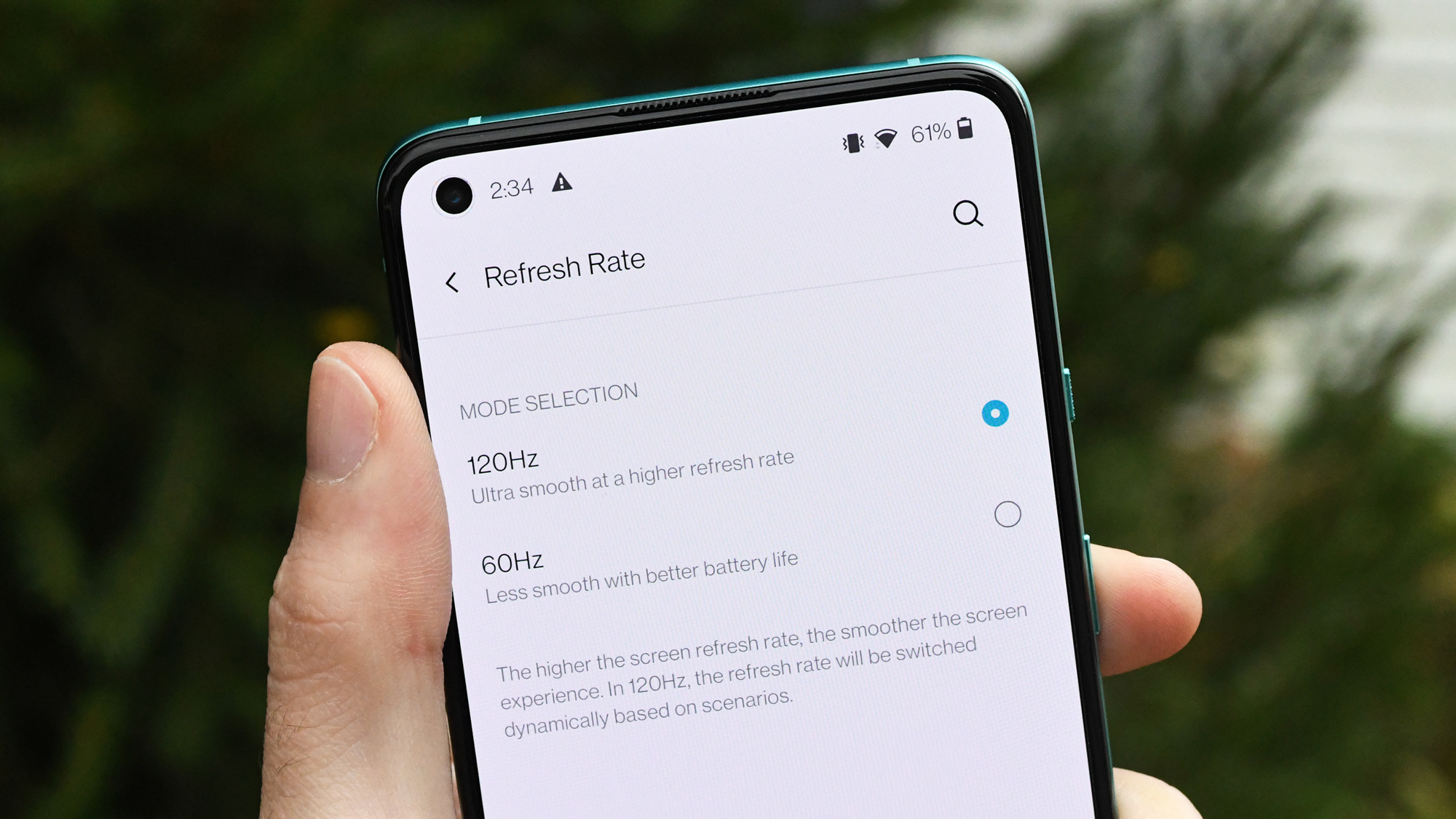
That’s not the 11 hours plus needed to make it onto our best phone battery life list. But it’s on par with other phones with high-refresh rate displays, outlasting the OnePlus 8 Pro, despite its 120 mAh larger battery, by 56 minutes. And it trounced the endurance of the S20 FE’s 4,500 mAh battery, which only managed 8 hours and 58 minutes.
Drop the display down to 60Hz and you’ll get 10 hours and 49 minutes of battery life, which is better than the average time for smartphones. But since going back to 60Hz isn’t an easy thing, I’d rather take the hit in battery life. And that's thanks to OnePlus’ new Warp Charge 65.
Very fast charging has always been one of the best features of OnePlus phones. And ramping up the speed of Warp Charge from 30W to 65W has further boosted OnePlus’ charging tech. The OnePlus 8T will now charge from zero to 55 percent battery capacity in a mere 15 minutes. Wait for 30 minutes and you'll have a battery that’s 93 percent full.
That should actually be ‘batteries’ as OnePlus has used two smaller batteries rather than one large battery pack in the 8T. Doing this somewhat circumnavigates the limitations of electrical resistance and heat when upping charger wattage and allows the 8T to charge very fast. Expect this tech to be adopted by other phone makers next year.
In practical terms, Warp Charge 65 means battery anxiety is pretty much eliminated if you’re near a wall socket. This charging comes at a price though, as there's no wireless charging support with the OnePlus 8T.
This is a little disappointing, as we’ve waited for ages for OnePlus to finally adopt wireless charging with the 8 Pro, only to see the OnePlus 8T drop it. I was told that OnePlus boss Pete Lau tried out a prototype with a wireless charging coil and decided it gave the phone too much bulk, so asked for it to be removed. I’m an advocate for wireless charging and feel it should now be a feature for mid-range phones, as well as flagship handsets, given the Pixel 5 has a wireless charging coil.
OnePlus 8T review: Software
Out of the box the OnePlus 8T comes with Android 11, which brings features such as media controls embedded into the drop-down menu and new screenshot controls. It also means the 8T has the latest security and privacy controls for Android.
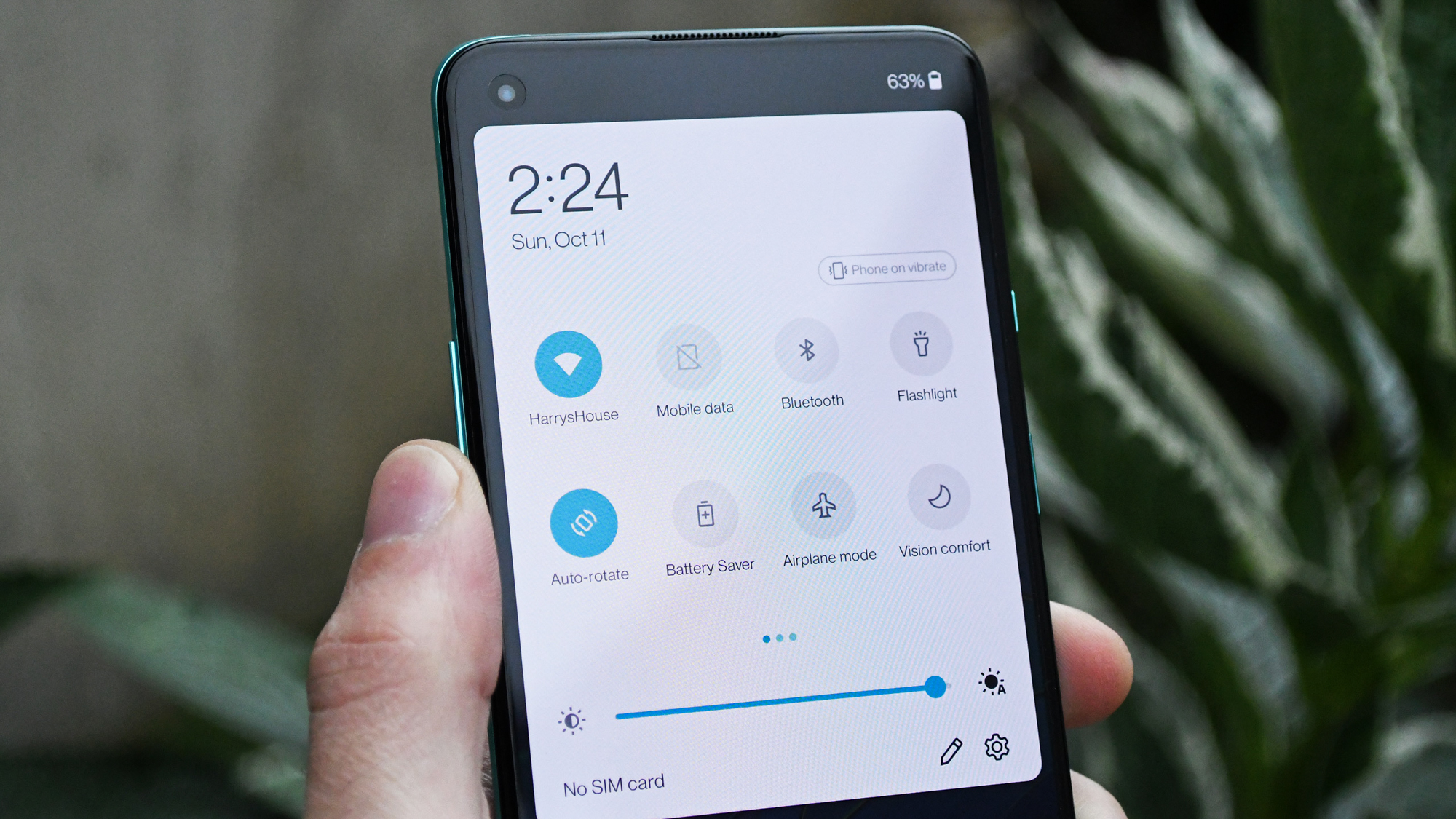
But the most interesting thing here is the debut of OxygenOS 11. The lightweight skin OnePlus adds on top of Android remains relatively fuss-free, but brings in a few improvements. These include gestures optimized for one-handed use. For example, there's a gap between the main settings heading and the menu options, meaning things like Wi-Fi and display controls are positioned toward the lower two-thirds of the screen making them easier to reach.
There is also a fresh dark mode that adjusts color tones and menu layers to make content easier to read. And generally the overall experience of using OxygenOS feels a little neater and cleaner, not that it was too messy to begin with compared to some other Android skins.
OxygenOS 11 also brings in an always-on display that can be configured to display a mix of notifications and clock styles; just keep in mind that this feature likes to chew on battery life. The most notable clock style is the new Insight AOD, which shows a type of temperature bar that goes from dark to light to dark to signify the passing off the day and is segmented with dark gaps to show when and how many times you have unlocked the 8T. That should appeal to people into digital wellbeing, as should the Zen mode that can lockdown the phone for 20 minutes to encourage you to stop checking it.
The under-display fingerprint scanner on the OnePlus 8T remains as responsive as ever. And Face Unlock is a solid alternative to finger-based biometrics, though you should bear in mind that it’s still not as secure as Apple’s Face ID.
OnePlus 8T review: Verdict
When I first got my hands on the OnePlus 8T, I really wanted to love it. I thought OnePlus was going to take the best parts of the high-end OnePlus 8 Pro and return to its roots by making a serious flagship-killer, especially after the underwhelming OnePlus 8. But the $749 price tag is too much, given the competition, and disappointing camera performance has made the OnePlus 8T a letdown.
Build quality, performance, and 120Hz display are serious high points for the OnePlus 8T. But I don’t think it really marks a major upgrade over the OnePlus 7T from last year. It’s a bit faster in benchmarks, but in real-world use that doesn't make a huge difference. And I don't think a jump from a 90Hz display to 120Hz is worth the price of an upgrade.
If you’re looking to upgrade from a non-OnePlus phone, then the 8T is still difficult to recommend at the moment. It might beat the Galaxy S20 FE on paper, but Samsung’s phone is cheaper n the U.S. and delivers impressive performance; it can also match the OnePlus 8T’s 120Hz display while taking better pictures. And if you can make do with a less powerful chip and a 90Hz display, which I think is fine, then the Pixel 5 crushes the 8T on phone photography.
You’ll note I said “at the moment.” That’s because if OnePlus improves the 8T’s cameras with a software update, then the phone could be a contender again, especially if its price then drops below $700. After all, the OnePlus 8T is a joy to use if you’re not snapping photos, thanks to OxygenOS 11 and super-fast charging, it’s just a shame OnePlus has dropped the ball with the cameras once again.
- More: OnePlus Nord vs OnePlus 8: What's different?
Roland Moore-Colyer a Managing Editor at Tom’s Guide with a focus on news, features and opinion articles. He often writes about gaming, phones, laptops and other bits of hardware; he’s also got an interest in cars. When not at his desk Roland can be found wandering around London, often with a look of curiosity on his face.
